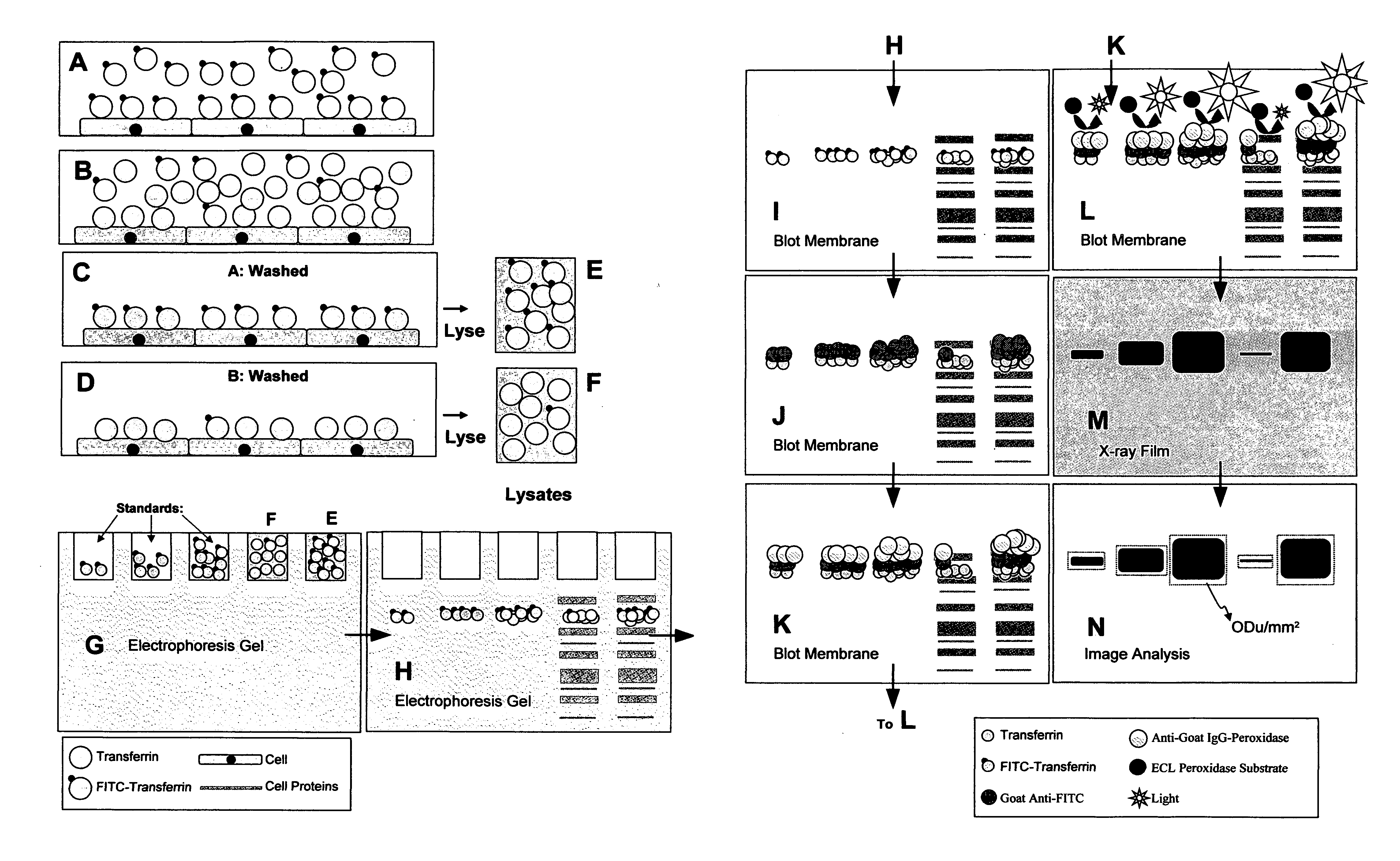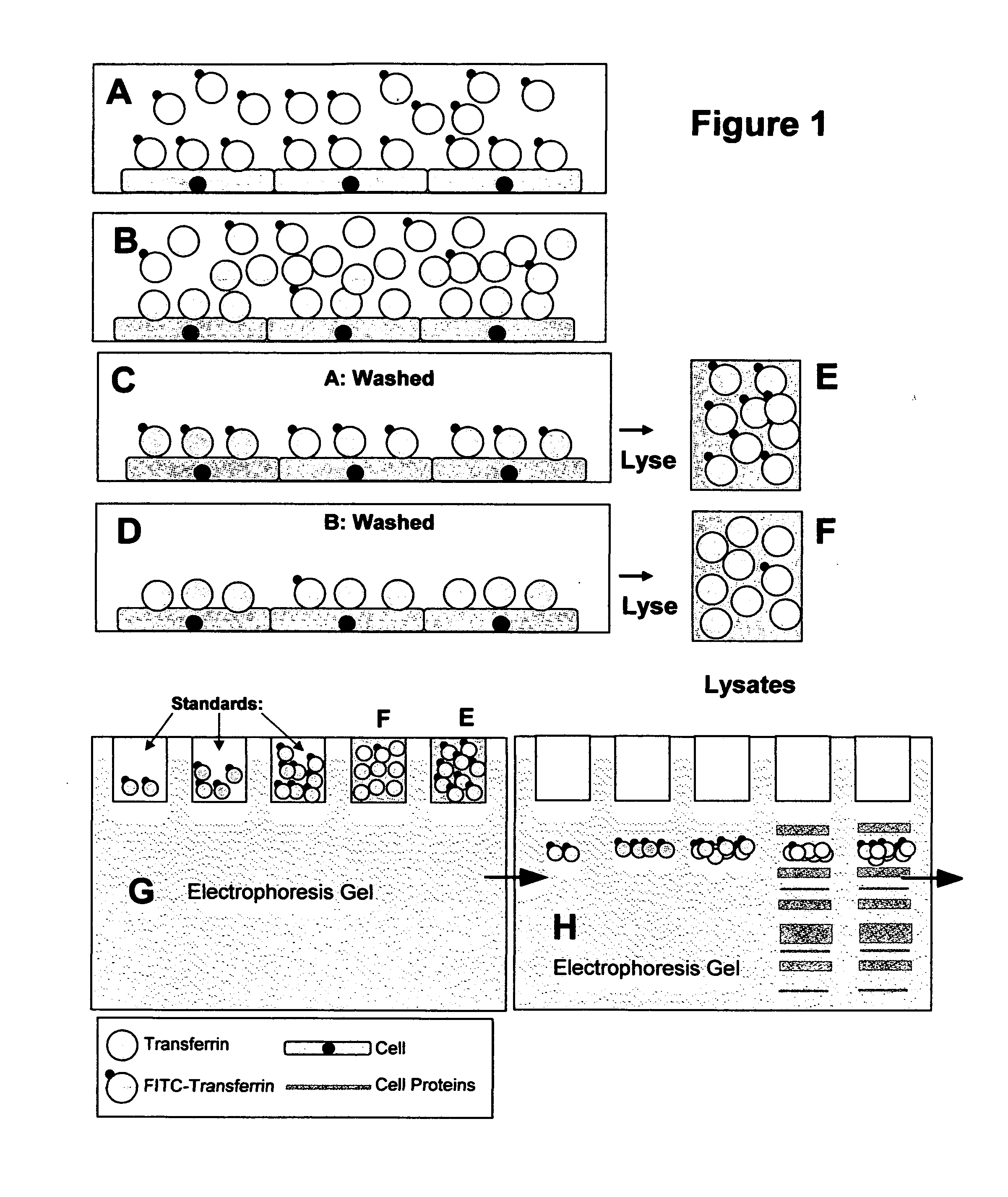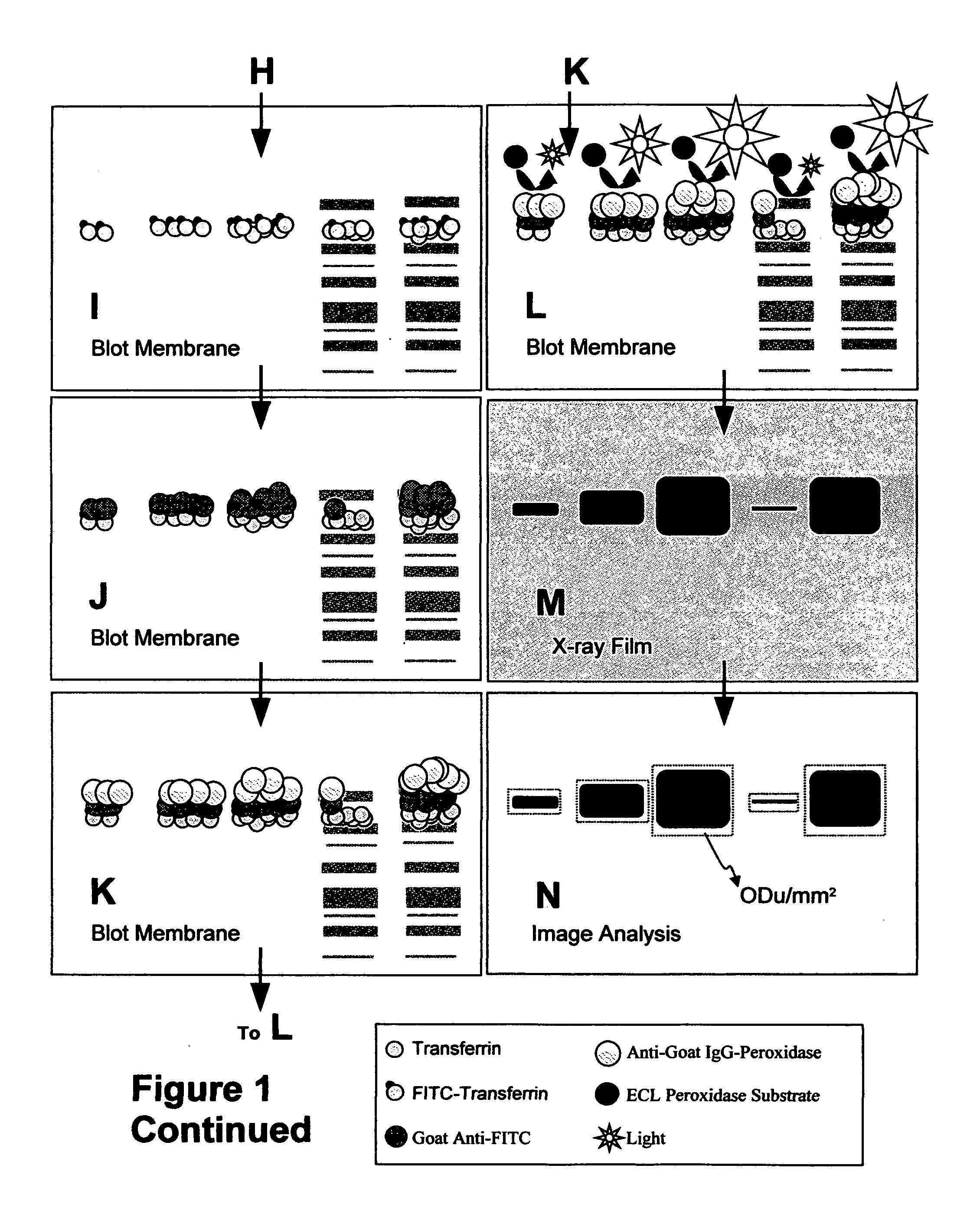Method for the detection and measurement of Hapten-conjugated biological binding entities by western and dot-blot using anti-hapten antibodies
a biological binding entity and anti-hapten antibody technology, applied in the field of western and dot-blot detection and measurement of hapten-conjugated biological binding entities, can solve the problems of inability to accurately quantitate ligand receptors/cells, inability to detect low levels of hapten-ligands, and difficult standardization of procedures. , to achieve the effect of enhanced chemi-luminescence, low-level detection of hapten-ligands, and enhanced luminescen
- Summary
- Abstract
- Description
- Claims
- Application Information
AI Technical Summary
Problems solved by technology
Method used
Image
Examples
Embodiment Construction
[0021]The object of the present invention is to provide a method for the sensitive non-radioactive assessment of ligand binding to insoluble surfaces. Specifically, the method developed measures the binding of transferrin, concanavalin-A, avidin, annexin-V, and insulin to cell surfaces. The basic detailed method using fluorescein-conjugated transferrin as a detectable antibody-recognizable hapten tracer follows. Specific alterations of this procedure for other ligands follow.
[0022]Fluorescein-conjugated iron-saturated (holo) human transferrin (FITC-Tf) was obtained from commercial sources. Cultured cells to be measured were grown to 50-60% confluence in 12 well plates. Cells were incubated with serum-free minimal essential media (alpha modification; ∝-MEM) for 12 h and then again with fresh ∝-MEM for another 12 h. The cell number in three wells was determined by trypsinization of those cells followed by enumeration on a cell counter. Media in remaining wells was replaced with 1 ml b...
PUM
| Property | Measurement | Unit |
|---|---|---|
| concentration | aaaaa | aaaaa |
| constant current | aaaaa | aaaaa |
| constant voltage | aaaaa | aaaaa |
Abstract
Description
Claims
Application Information
 Login to View More
Login to View More - R&D
- Intellectual Property
- Life Sciences
- Materials
- Tech Scout
- Unparalleled Data Quality
- Higher Quality Content
- 60% Fewer Hallucinations
Browse by: Latest US Patents, China's latest patents, Technical Efficacy Thesaurus, Application Domain, Technology Topic, Popular Technical Reports.
© 2025 PatSnap. All rights reserved.Legal|Privacy policy|Modern Slavery Act Transparency Statement|Sitemap|About US| Contact US: help@patsnap.com



